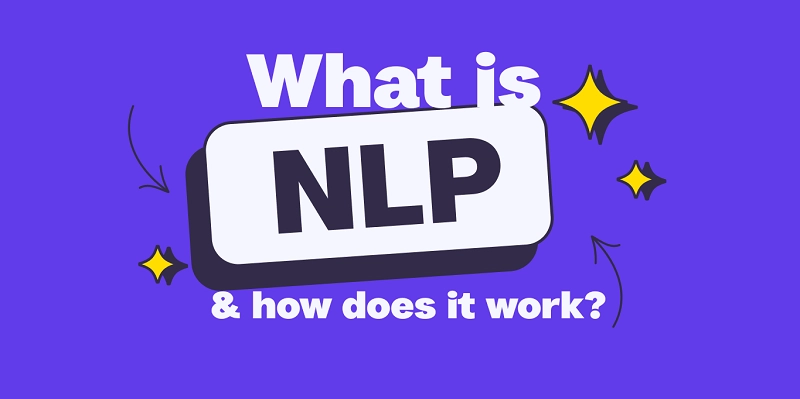What Is NLP? Techniques and Practical Use Cases
• Customer Support
• FastBank

Natural language processing (NLP) is one of the fastest-growing artificial intelligence branches and a great testament to how far technology has come. It’s what allows machines to understand and use the human language to communicate with us.
Interestingly, NLP emerged from linguistics in the 1950s and grew into a separate field with the advancement of technology. As a unique combination of artificial intelligence, computer science, and linguistics, natural language processing is a complex mechanism with still much room to grow.
Read on to learn more about what NLP is, how it functions, its practical usage, and more!
What Is NLP?
Before we begin, let’s define the NLP meaning. Natural language processing, often called NLP, is the interpretation and manipulation of the human language by computers. Natural language or ordinary language is what we as humans use to communicate. And NLP is the process of teaching machines to understand that language.
As one of the fastest-growing machine learning subfields, natural language processing has significantly expanded its usage in recent years.
Note: Do not confuse natural language processing with neuro-linguistic programming, as both share the same acronym but refer to two different concepts.
NLP vs. NLU vs. NLG
To give you a fuller understanding of the NLP system, there are a few more acronyms we need to uncover:
-
NLU (natural language understanding) conducts a syntactic and semantic analysis of text/speech to understand the meaning of a sentence and find relationships between words.
-
NLG (natural language generation) generates human-like text to respond to the given query.
-
NLP (natural language processing) combines the two, in a sense. It enables machines to understand text or speech and formulate relevant answers.
In simpler terms, NLU is what allows machines to read, while NLG is what allows them to write. As such, they’re an integral part of the NLP system. Both approach the human language as a rule-based system consisting of morphology, lexicons, syntax, and semantics.
How Natural Language Processing Works
Essentially, NLP processes the text or speech input and translates it into code computers can read. If the command is spoken, machines use speech recognition technology to convert the speech into written text and continue the same process.
There are a few primary NLP techniques used to allow computers to decipher a normal text:
-
Tokenization — Text is segmented into small units called tokens — hence the technique's name. See an example below:
-
Stemming and lemmatization — This process removes derivations and other grammatical forms of words to leave the word stems. E.g., store, stores, store’s, stores’ → store.
-
Part-of-speech tagging — Also known as grammatical tagging, POS tagging marks words with a specific part of speech (verb, noun, adverb, adjective, etc.).
-
Parsing — This NLP task analyzes the grammatical structures of a sentence or phrase.
The described NLP approaches are based on a subfield of machine learning known as deep learning. The latter examines data to identify patterns and correlations, thus imitating how humans acquire new knowledge.
With deep learning, more complex NLP algorithms are developed, such as sentiment analysis, topic modeling, automatic text summarization, etc. More on that in a bit.
What Is NLP Used for?
By now, you hopefully have a better understanding of natural language processing. But what is it used for? The real-life applications of NLP are quite diverse and inherent in our daily lives. Below, you’ll find some of the most common NLP examples.
Virtual Assistants
AI-based virtual assistants are one of the most widely used applications of NLP. From voice-activated assistants like Siri and Alexa to AI assistants and clones on websites, these tools implement NLP to conduct conversational interactions with users.
Machine Translation
Translation is another task highly facilitated by NLP techniques. If you’ve ever used Google Translate, DeepL, or any other automatic translator, you’ve probably witnessed how much the technology has evolved over the years.
Before, the translators would simply exchange one word in a given language with its match in another one. But as NLP technology advanced, machine translation tools acquired contextual awareness to provide more accurate translations. Computers use adaptive machine translation to learn from corrections and past translations in real-time and improve the output.
Brand Sentiment Analysis
In human communication, each statement has a specific sentiment behind it, no matter how acute or subtle. Detecting and properly responding to sentiments does not come innately to computers. But sentiment analysis bridges this gap.
Sentiment analysis or opinion mining classifies textual data into positive, negative, or neutral buckets. While oversimplified, this approach enables businesses to track their brand perception on social media networks, customer feedback platforms, and elsewhere.
If your company has an omnichannel presence, you’ll receive user feedback from multiple sources. Not to mention, people might comment on your brand or products online without directly tagging your page. Analyzing the sentiment behind those opinions will help you determine whether the public is satisfied with your business.
Predictive Text
The days of T9 predictive text are long gone. We’ve gotten used to the convenience of our phones automatically completing our words from just a few letters. And we owe this to natural language processing. Autocorrect, autocomplete, and predictive text are practical applications of NLP that get increasingly accurate with more data.
The algorithms can give us personalized suggestions based on our individual typing habits. They record which words and phrases you typically use together to provide you with recommendations in recurring scenarios.
Challenges of NLP
In all its complexity and nuances, natural language is challenging for humans and even more so for computers. The study of NLP has been around for over half a century and still has a long way to go. Let’s discuss some of the biggest difficulties NLP is facing.
Lack of Precision
The way humans construct their thoughts is not always straightforward and perfectly aligned with grammatical rules. We often omit words or phrases, give vague commands, use slang and dialects, etc. Spoken language adds another layer of complication since we don’t always put in the effort to enunciate each and every word.
As you can imagine, any diversion from the norm will cause misunderstandings when a machine tries to process the information. The solution to this is larger datasets, better data profiling, and more time.
Language Evolution
The Elizabethan English in which Shakespeare wrote might sound foreign to an English speaker today. In its very nature, language is ever-evolving and never stands still. The very term “natural language processing” wouldn’t make much sense in the Middle Ages when the invention of mechanical clocks was as far as technological advancement went.
As the world around us constantly shifts, so does the language we use to describe it. Words, meanings, phrases, and even sentence structures can lose relevance over time, making it harder for computers to keep up.
Different Tones of Voice
The same words can have two different meanings based on the context and intended tone. For instance, “Great job!” is generally a positive affirmation, but it can mean the opposite when used sarcastically.
Since machines have not yet mastered sarcasm, humor, irony, and other tones of voice, they often misjudge the true meanings of words when taken at face value. The subtle changes in tonality and emotion are tricky to explain through NLP techniques, so perhaps, we should be more forgiving when a computer doesn’t understand our funny jokes.
Natural Language Processing Doesn’t Stop Here
This blog post covered all the need-to-knows of natural language processing — from NLP meaning to NLP techniques and where they are applied. Natural language processing (NLP) allows machines to understand and respond in ordinary human language.
Thanks to advancing machine learning methods, NLP continues to develop further, becoming more applicable in both business and daily life. The technology powers virtual and voice-activated assistants, machine translation, predictive text, autocorrect, and a lot more.

























